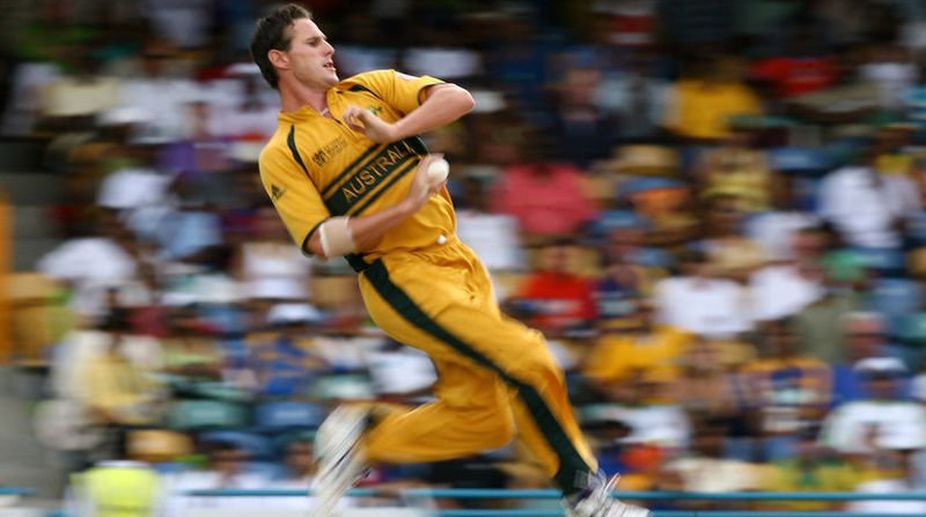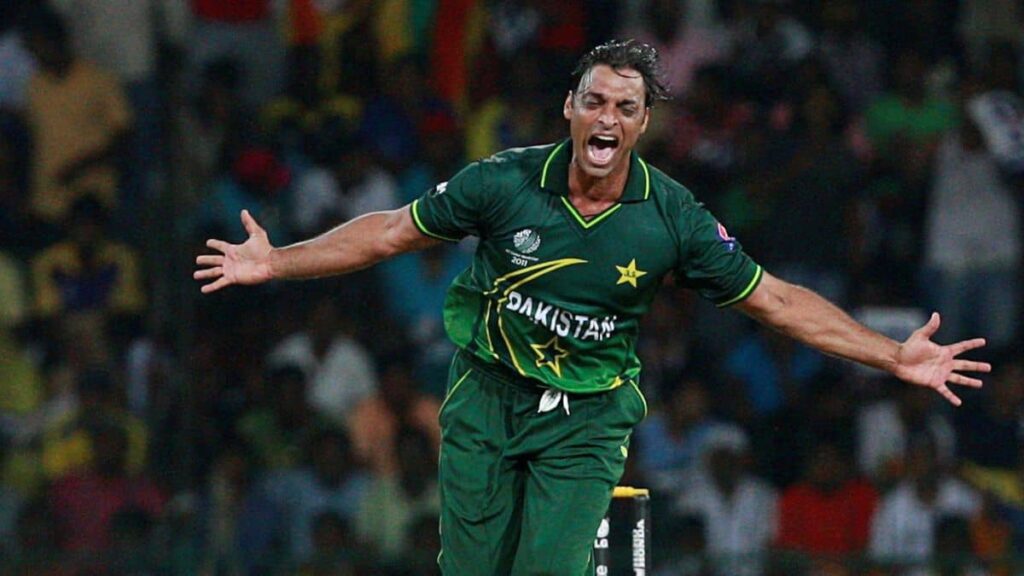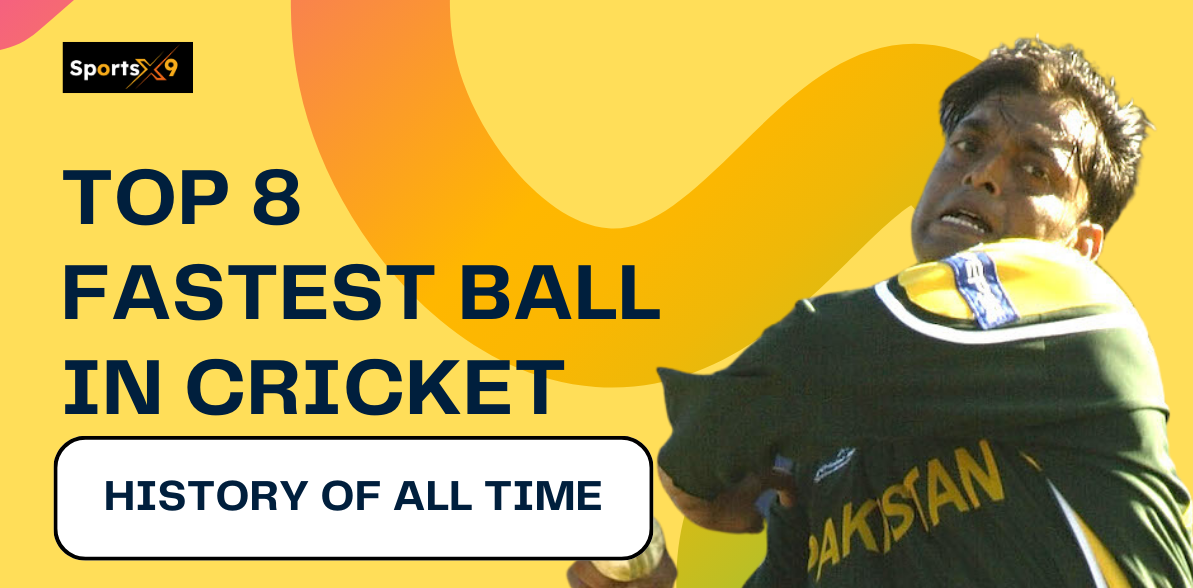Are you intrigued by the idea of a ball hurtling towards you at over 100 miles per hour as a cricket player? Cricket, a bat-and-ball game, features this thrilling phenomenon known as fast bowling.
Fast bowlers challenge batters with a searing pace, demanding exceptional reflexes and defensive skills in this high-stakes duel.
For fans who love the adrenaline of the game, keeping track of such moments can enhance the excitement, especially when using a cricket betting ID to engage with the sport. Let’s look at the 8 greatest bowlers with the fastest ball in cricket history.
8. Mitchell Johnson, Australia — 156.8km/h (97.4mph)
The 2013 Ashes series was the event that was a comeback for the fast bowler of Australia Mitchell Johnson. Johnson landed on the scoreboard after being run over by the English batsmen during previous encounters.
He took it as disrespect and reacted in a manner, contributing nothing but the venom that almost scared the English batsmen. One of such fast deliveries was for instance at 156.8 km/h (97.4 mph). Also, explore Sportsx9 a platform that looks into the exhilarating world of cricket, showcasing the Fastest ball in cricket history.
Q. How fast is fast bowling in cricket?
A. The speeds can vary, but generally, fast bowling is considered to be deliveries exceeding 140 km/h (90 mph). The fastest bowlers can reach speeds over 160 km/h (100 mph).

7. Fidel Edwards, West Indies — 157.7 km/h (98 mph)
Fidel Edwards, a West Indies who wanted the wise and who considered himself as a jaguar who always looked for another prey, proved to be bold. The bowling magic of Spike was spin bowling, which became an icon for fear of batsmen worldwide.
There was a hill to the left of the players, 40 seconds from the end when the Wizard hurled a shot that recorded 157.7 km/h (98mph) on the radar. If this was not enough, he would add to the difficulty by throwing one challenging twist after another.
6. Andy Roberts, West Indies – 159.5km/h (99.1mph)
This was especially true of the ’70s to the early ’80s when four fearful fast bowlers from the West Indies, who threw the balls very fast, caused opposition teams to experience great pains — thus the price did not matter.
However, if we regard his best-tracked speed of 159.5 km/h (99.1mph), it would be nothing compared to the speeds other people listed below have run.
Roberts standing out as he was a part of the formidable West Indies pace attack of the 1970s and 1980s is yet to be imagined full stop. With this application, Sportsx9 can recreate the outbursts of bowlers like Shoaib Akhtar, Brett Lee, and Mitchell Starc, leading to new fan interaction for the Fastest ball in cricket history.
Q. What time can be called fast bowling in cricket?
A. The historic pace attacks made by the West Indies in the 70s and 80s and modern-day wicket chances of bowlers like Shoaib Akhtar and Brett Lee.
5. Mitchell Starc, Australia – 160.4km/h (99.7mph)
This batter would undoubtedly have shivers down his spine if he saw a left-arm pacer coming towards him, and the legendary Mitchell Starc’s inclusion on this list at number five would send anyone’s fantasies spiralling into nightmares.
As one of the Australian pacers with explosive speed charges, the bowler has been ranked as one of the fastest in the modern era due to his unique ability to simply power out great pace right from his smooth action.
Starc’s world-record delivery of 160.4 km/h (99.7mph) is one impressive feat. It aligns him as one of the few bowlers who can leverage raw power and consistently pose a threat to the most prolific batsmen.
4. Jeff Thompson, Australia – 160.6km/h (99.8mph)
Jeff Thompson’s name will always be remembered in Australian fast bowling records because few legends of fast bowling can stand up against his glory. A real legend of cricket, Thompson’s capacity to charge speed and entrap batsmen in the 1970s and early 1980s is a discriminant characteristic for these times.
It was during that year’s match against the West Indies that Tomoki Thompson fired an opening spell that would remain indelibly burnt in the memories of everyone present. The ball clocked at a searing 160.6km per hour and (99.8mph), was like a tornado, swift enough to keep even the rippling West Indies batsmen, at the notice of the danger, bearing testimony to Thompson’s fury.
3. Brett Lee, Australia — 161.1km/h (100.1mph)
It not only Brett Lee has threatened not only the output of fast bowling but also of fear or intimidation The Australian speedster was a master of utilising his blistering pace to assert his dominance over opposition batsmen, as he so eloquently stated: “I can build up with confidence if the attacks and myself are controlled.
So if the bowler has the ball in his hand, the dominancy is in his hand. Therefore, the bowler should always make sure that the batsmen will know who is the dominant one.” In the case when Lee’s promise to deliver the ball, blew up the speed gun to register 161.1 km/h (100.1mph) km/h, it was never more evident that Lee was backing his words with deeds.
Q. Why is fast bowling exciting in cricket?
A. Fast bowling is exciting due to the high-pressure battle between the batsman’s skill and the bowler’s raw pace.
2. Shaun Tait, Australia — 161.1km/h (100.1mph)

Brett Lee personified produced control with his aggressive attitude towards play, while Shaun Tait gave the best example of wild and furious consisting. Tait’s approach to fast bowling was uncompromising, as he made clear with his infamous declaration: “It is the price you need to pay.”
Nowadays, he is occupied just with his head and nothing else. They don’t hesitate to strike our guys in the head. It will be a good contest. I’m up for that.” it was a no-nonsense attitude that was ultimately underpinned by an expressive, unadulterated pace where Gordon Tait’s top recorded delivery was at a whopping 161.1 km/h that matched Constable Lee’s at 161.1km/h.
1. Shoaib Akhtar, Pakistan — 161.3km/h (100.2mph)

These ratings are just the young ones in front of the legendary thrash king, Shoaib Akhtar. Till the day 23 years back, the Fastest ball in cricket history was never perceived to be breaching the much-coveted 100mph barrier.
Amit averaged over 161.3 km/h (100.2mph), which comes out to be the fastest delivery in cricket since then. Amit superseded his contemporaries, and everyone was left scratching their heads wondering: Is this possible?
It is exactly what the man himself said, “it wouldn’t bother me to myself to know that the speed gun is recognised or not by who knows its existence.” From Jeff Thompson’s tornado-like bowling to Shaun Tait’s wild and furious style, Sportsx9 captures what makes fast bowling in cricket so thrilling and impactful.
Conclusion
Undoubtedly, on the great canvas of the game as rich in history as cricket, the Fastest ball in cricket history is where the pace bowlers’ folklore is scattered. The pace battery of the West Indian cricket team in the 1970s and 1980s is every bit as imposing.
It seems capable of sending the ball at blinding speeds as the modern-day efforts of Shoaib Akhtar and Brett Lee push the limits of the physically possible far beyond what was to be achievable. Meanwhile, for more articles like this, do follow Sportsx9.
You might also like to read








